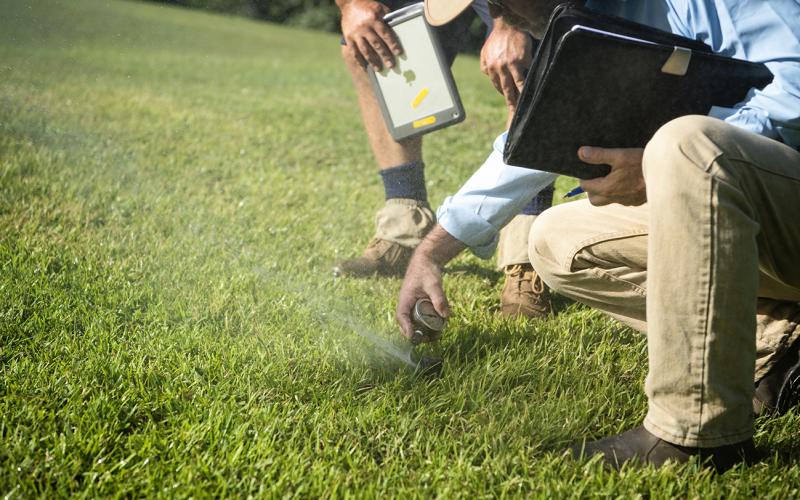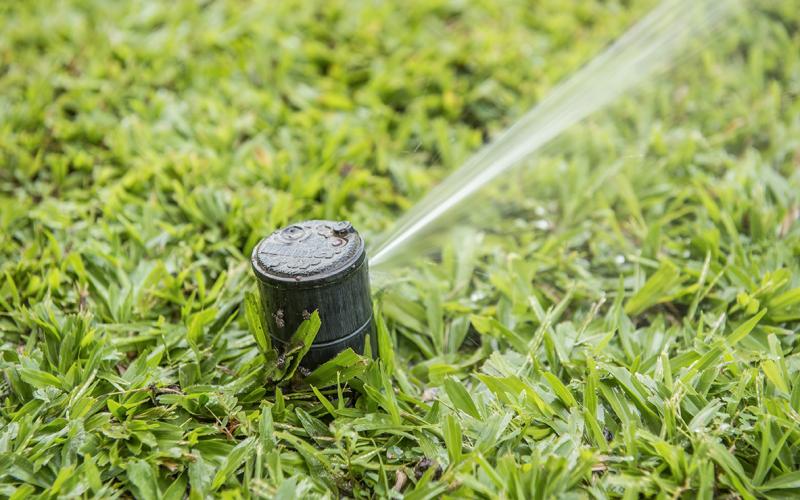Are water tanks the most efficient way to save water in Darwin?
Are water tanks the best way to save water in Darwin? Our research tells us that whilst water tanks are a great way to capture rain water for later use, installing a rainwater tank is generally not the most effective way to reduce potable (drinkable) water use. Here are the reasons why:
Water use in the garden:
On average, 57% of household water use in Darwin is on our lawns and gardens and most of the time our gardens are overwatered. The amount of water we all use in our gardens is highly dependent on weather. During the wet season we tend to water our gardens less due to increased rainfall, so our overall household water use decreases dramatically. In the dry season we water our gardens and lawns much more, increasing our overall water use. Simply reducing our garden water use is the most effective way to save water in Darwin.
With this in mind, you may think that using water stored in a rainwater tank for the garden is also an effective way to reduce potable water use. However, in Darwin where our garden water use is so high and our rainfall so variable, this is not the case.
In the wet season, when there is rain to fill the tank, our lawns and garden beds generally don’t need much water. Then in the dry season, we use so much water on our gardens that most residential tanks would empty within a week!
To give you a little more context, most urban residential properties have the space to install a small to medium water tank with a 2 - 3 meter diameter. This size tank holds from 5,000 to 10,000 litres of water. When the average Darwin home uses just over 210,000 litres of water per year in the garden, and there is no rain to refill the tank for around six months of the year, the tank would sit empty for much of the dry season. Then, in the wet season, the tank would be overflowing, creating run off and maintenance issues at a time of year when we don’t need to water our gardens as often.
*The average Darwin home uses 370,000 litres of water per year, and 57% of this is used in the garden.
Water use in the home:
Water tanks can be plumbed into the home supplying suitable areas, such as toilets and washing machines. Whilst this can definitely help a little, the problem is that these areas account for a much lower percentage of overall household water use. For instance, a toilet uses less than 5% of the average household water use in Darwin, and the kitchen and laundry combined use about 7%. So, whilst using tank water in these areas can save a little water, unfortunately it's not going to have nearly as much impact as reducing water use in the garden.
In conclusion...
Reducing garden water use by simply reducing watering and irrigation schedules is a much more effective way to reduce overall water use in Darwin homes, than installing a rainwater tank. The costs of installing and maintaining a rainwater tank, and the improbability of keeping enough water in the tank to meet all watering needs during the long dry season, make it a less effective option.
In saying that, Living Water Smart encourages and applauds water savings of any kind. There are some great ways to use water tanks to reduce water use:
- On average, 2% of household water use in Darwin is used to fill up pools, so you could connect a hose to your water tank and use the water to fill up your pool during the dry season without the tank running dry too quickly.
- Use tank water for a small water efficient garden bed, for instance a rock garden or small native garden. Most water efficient plants only need 10 mm of water once (or perhaps twice) a week which won’t dry up your water tank too quickly in the dry.
- If you live on a large block, you could install multiple large tanks and set up a slow-drizzle irrigation system so you don't use up your stored water too quickly.
- You could use your tank for drinking water, by filling up water jugs and placing them in the fridge or by plumbing into your kitchen sink using a second water spout. However, it does take additional time and money to maintain your tank to ensure that your drinking water meets national guidelines. In particular, you need to:
- Every three months: Check your gutters are clean to avoid animal faecal matter being washed into your tank.
- Every three months: Check your tank's mosquito mesh is in good repair to limit disease-carrying insects and other vermin getting into your water.
- Every six months: Check your water quality, looking at the colour, smell and level of sediment.
- Every six months: Check your pumps and pipes are all intact and functioning.
- Every two years: Desludge. It's recommended you use a qualified contractor to remove the sediment that builds up in water tanks.



